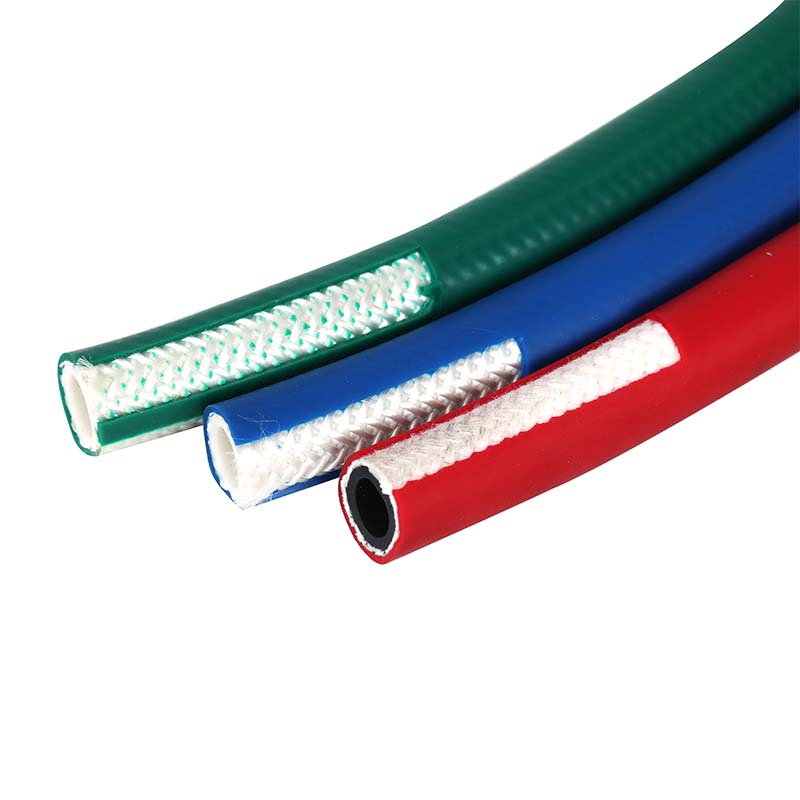hose oxygen acetylene
Understanding Hose Usage for Oxygen and Acetylene in Welding
Welding is a critical process in various industries, from construction to automotive repair, characterized by the joining of metals through high heat. Among the various welding techniques, oxy-acetylene welding, also known as gas welding, is a popular method. This technique relies on a combination of oxygen and acetylene gases, which are delivered through hoses to enable precision welding. Understanding the proper usage and safety precautions of hoses for oxygen and acetylene is essential for effective and safe welding operations.
The Role of Oxygen and Acetylene
Oxygen is crucial in increasing the flame temperature produced by the gas, leading to better combustion and more efficient welding. Acetylene, on the other hand, is a highly combustible gas that burns at a temperature exceeding 3,000 degrees Celsius (5,400 degrees Fahrenheit) when combined with oxygen. This extreme heat allows for the melting and fusion of metals, making oxy-acetylene welding an invaluable technique for tasks requiring strong, durable joints.
Types of Hoses
In an oxy-acetylene setup, two types of hoses are utilized the oxygen hose and the acetylene hose. The oxygen hoses are typically color-coded green, while acetylene hoses are usually red. This color-coding is crucial for safety, helping prevent accidents related to incorrect gas connections.
The hoses are designed to withstand high pressure, given that oxygen is supplied at higher pressure than acetylene. The standard working pressure for acetylene is generally around 15 psi (pounds per square inch), while oxygen can go up to 30 psi or higher. It is imperative to choose hoses that meet safety standards to ensure they can handle the required pressures without bursting or leaking.
Safe Handling and Storage
hose oxygen acetylene

Proper handling and storage of oxygen and acetylene hoses are key to maintaining safety during welding operations. Hoses should always be checked for leaks before use by applying a soap solution, which will bubble if there is a leak. Additionally, hoses should be regularly inspected for wear and tear. Any cracks, frays, or other damage necessitate immediate replacement.
When storing hoses, they should be kept untangled and away from heat sources. Coiling hoses too tightly can lead to internal damage, while exposure to high temperatures can cause hoses to deteriorate or even melt. Proper storage not only extends the life of the hoses but also contributes to the safety of the work environment.
Connecting the Hoses
When connecting hoses to the welding equipment, it is important to ensure the connections are secure but not overly tight, as this can damage the fittings. Start with the oxygen hose (green) and attach it securely to the oxygen regulator, followed by connecting the acetylene hose (red) to the acetylene regulator. Always open the oxygen valve first when igniting the torch, followed by the acetylene to avoid backfiring—a potentially dangerous situation where the flame travels back into the hoses.
Backfire and Flashback Arrestors
One of the inherent risks in oxy-acetylene welding is the phenomenon known as backfire or flashback. A backfire occurs when the flame goes out and lights back up at the torch tip. A flashback is when the flame travels back into the hoses. Both situations can lead to severe injury or equipment damage. Therefore, using flashback arrestors is highly recommended. These are safety devices that can prevent flames from traveling back into the hoses, providing an extra layer of protection for the welder.
Conclusion
The combination of oxygen and acetylene through properly maintained hoses creates one of the most efficient welding methods known today. Understanding the roles of these gases, the characteristics of the hoses, and the safety protocols associated with their use is essential for anyone involved in welding. By adhering to these guidelines, welders can ensure they operate safely and effectively, producing high-quality results while minimizing risks associated with gas welding. Mastering this essential technique not only enhances the welder's skills but also contributes to the overall safety and efficiency of the workplace.
-
Top Quality Oxy Acetylene Hoses for Sale Fit for Welding DemandsNewsJul.28,2025
-
The Future of Pneumatic Air Tubes in IndustryNewsJul.28,2025
-
Superior and Reliable LPG Hose Pipe Solutions for Every NeedNewsJul.28,2025
-
Exceptionally Durable and Versatile Premium Braided PVC TubingNewsJul.28,2025
-
Best Adapters for Connecting Garden Hose to PVC Pipe ConnectionsNewsJul.28,2025
-
The Essential Role of LPG Hoses in Safe and Efficient Gas DistributionNewsJul.16,2025














